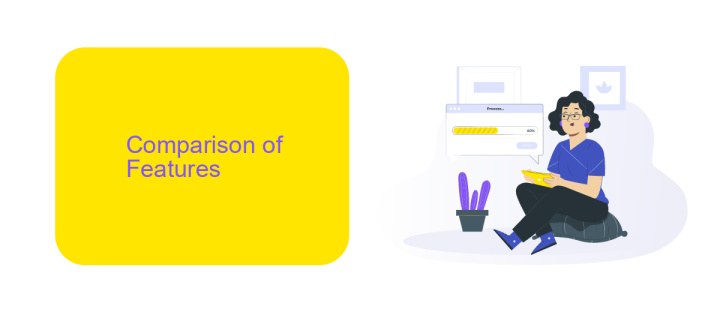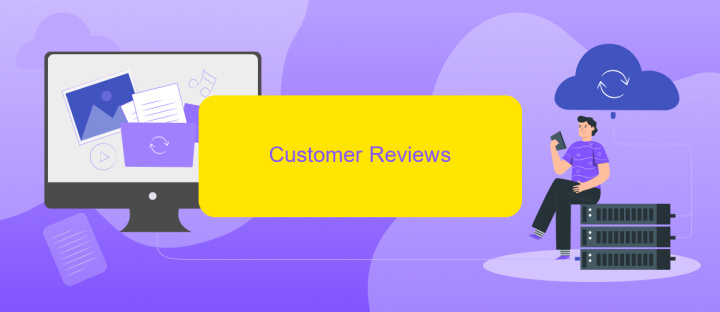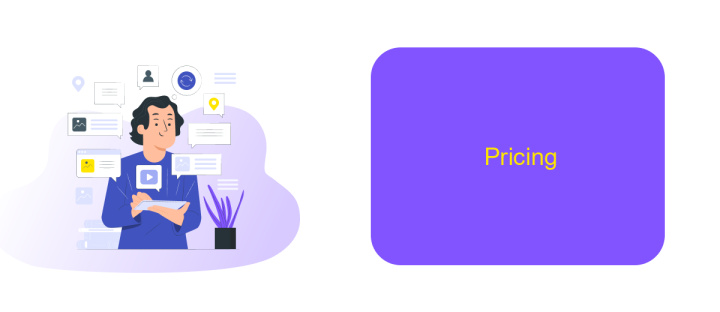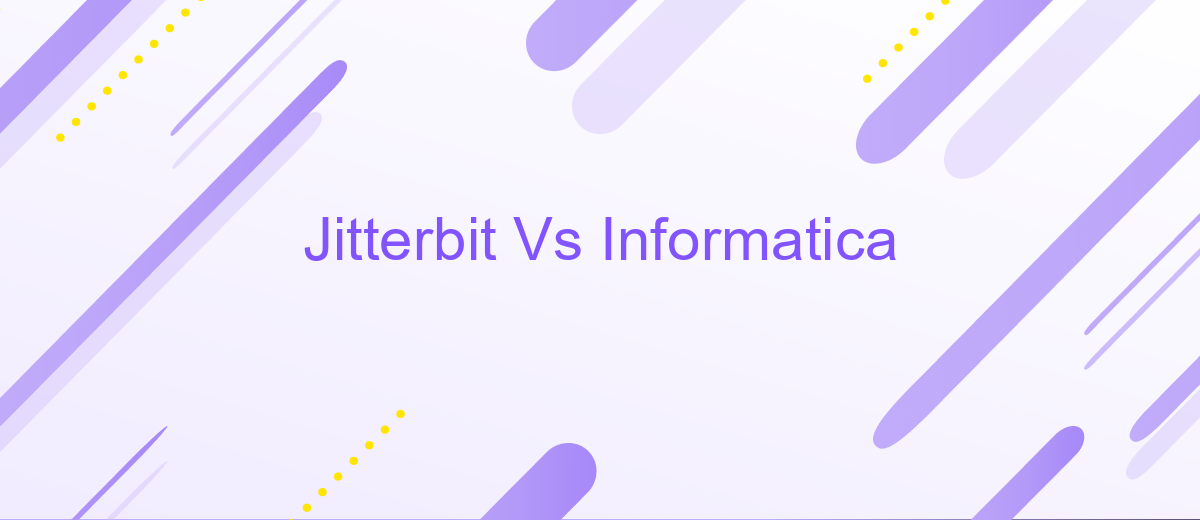Jitterbit Vs Informatica
When it comes to data integration and management, Jitterbit and Informatica are two prominent players in the industry. Both platforms offer robust solutions designed to streamline data workflows and improve business efficiency. In this article, we will compare Jitterbit and Informatica, examining their features, ease of use, pricing, and overall performance to help you determine which tool best suits your organizational needs.
Introduction
In the rapidly evolving landscape of data integration and automation, businesses are constantly seeking tools that offer efficiency, reliability, and scalability. Two prominent players in this space are Jitterbit and Informatica, each providing robust solutions for connecting various applications, systems, and data sources. Understanding the strengths and limitations of these platforms is crucial for organizations aiming to optimize their data workflows and achieve seamless integration.
- Jitterbit: Known for its user-friendly interface and rapid deployment capabilities.
- Informatica: Renowned for its comprehensive data management and integration features.
- ApiX-Drive: An emerging service that simplifies the integration process with an intuitive, no-code platform.
Choosing between Jitterbit and Informatica depends on various factors, including the specific needs of your business, the complexity of your data environment, and your budget. Additionally, platforms like ApiX-Drive can complement these tools by offering straightforward, no-code integration solutions that cater to a wide range of use cases. By evaluating these options, organizations can make informed decisions to enhance their data integration strategies.
Comparison of Features

When comparing Jitterbit and Informatica, one of the key differences lies in their integration capabilities. Jitterbit offers a user-friendly interface with easy drag-and-drop features, making it simpler for businesses to configure integrations without extensive technical knowledge. On the other hand, Informatica provides a more robust and scalable solution, ideal for large enterprises with complex data integration needs. Both platforms support a wide range of connectors, but Informatica's extensive library and advanced data transformation tools give it an edge in handling large-scale integration projects.
In terms of additional services, Jitterbit and Informatica both offer cloud-based solutions that enhance flexibility and accessibility. However, for businesses looking for an even more streamlined approach to setting up integrations, services like ApiX-Drive can be highly beneficial. ApiX-Drive simplifies the process by allowing seamless integration with various applications, reducing the time and effort required to manage data flows. This can be particularly advantageous for small to medium-sized businesses seeking efficient and cost-effective integration solutions.
Customer Reviews

When comparing Jitterbit and Informatica, customer reviews provide valuable insights into their performance and usability. Users often highlight the strengths and weaknesses of each platform based on their experiences.
- Jitterbit is praised for its user-friendly interface and ease of use, making it a popular choice among small to medium-sized businesses. Many users appreciate its quick setup and intuitive design.
- Informatica, on the other hand, is frequently commended for its robust features and scalability. Enterprise-level organizations find its comprehensive tools and advanced capabilities beneficial for handling complex data integration tasks.
- ApiX-Drive is often mentioned in reviews as a complementary service for both Jitterbit and Informatica users. It simplifies the integration process even further, offering an easy-to-use platform for connecting various applications and services.
Overall, customer reviews suggest that while Jitterbit is ideal for those seeking simplicity and speed, Informatica is better suited for large-scale operations requiring extensive functionality. ApiX-Drive enhances the experience for both platforms by providing seamless integration solutions.
Pricing

When it comes to pricing, both Jitterbit and Informatica offer flexible plans tailored to different business needs. Jitterbit provides a subscription-based pricing model that scales with the number of integrations and the volume of data processed. This allows businesses to start small and expand their usage as needed, ensuring cost-effectiveness.
Informatica, on the other hand, offers a more complex pricing structure that includes various modules and add-ons. This can make it challenging to estimate the total cost, but it also provides the flexibility to pay only for the features you need. Informatica's pricing is typically based on factors such as data volume, number of users, and specific functionalities required.
- Jitterbit: Subscription-based, scalable pricing
- Informatica: Modular pricing with add-ons
- Both offer customized plans based on business requirements
For businesses looking for a simpler and more transparent pricing model, Jitterbit might be the better option. However, for those requiring a wide range of functionalities and are willing to navigate a more complex pricing structure, Informatica could be more suitable. Additionally, services like ApiX-Drive can help streamline the integration process, potentially reducing overall costs.
Conclusion
In conclusion, both Jitterbit and Informatica offer robust solutions for data integration and management, catering to different business needs and scales. Jitterbit stands out with its user-friendly interface and rapid deployment capabilities, making it an excellent choice for businesses looking for quick and efficient integration solutions. On the other hand, Informatica provides a comprehensive suite of tools that are ideal for large enterprises requiring extensive data management and complex integration scenarios.
When choosing between Jitterbit and Informatica, it's crucial to consider the specific requirements of your organization. If ease of use and speed are your primary concerns, Jitterbit might be the better option. However, for organizations needing a more extensive and versatile data integration platform, Informatica is likely the superior choice. Additionally, services like ApiX-Drive can complement these platforms by offering seamless automation and integration, further enhancing your data management capabilities.


FAQ
What are the key differences between Jitterbit and Informatica?
Which platform is better for real-time data integration?
How do Jitterbit and Informatica handle API integrations?
What are the costs associated with Jitterbit and Informatica?
Is there a service that can help implement and configure these integrations?
Apix-Drive will help optimize business processes, save you from a lot of routine tasks and unnecessary costs for automation, attracting additional specialists. Try setting up a free test connection with ApiX-Drive and see for yourself. Now you have to think about where to invest the freed time and money!

